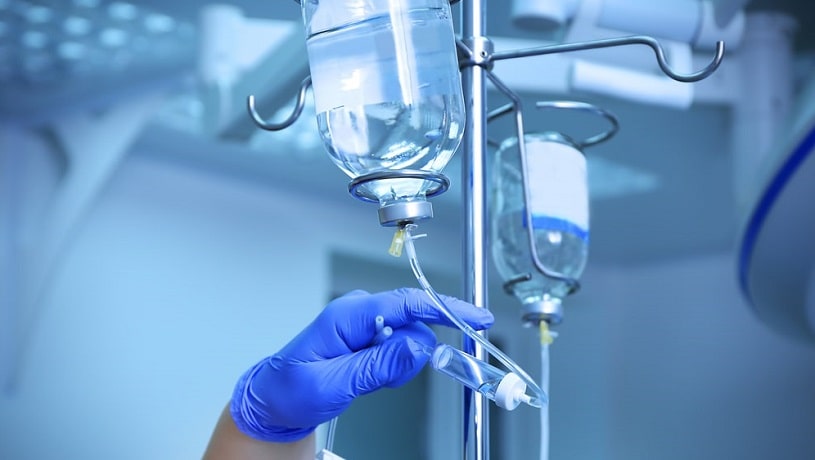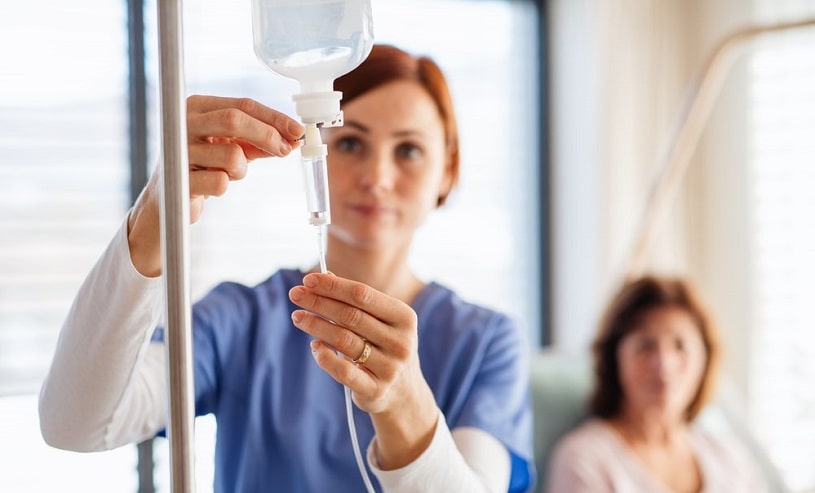Addiction is a global concern that affects millions of people. Recent reports by the National Institute on Drug Abuse claim that there seems to be a concerning rise in drug usage among middle-aged adults and some of the older adults in the United States. Different therapy methods have been suggested, but utilizing pharmaceutical drugs is often frowned upon.
Table Of Contents:
The NAD supplement is now a preferred method for the treatment of addiction. NAD IV therapy is a relatively new treatment option but has been shown to hold the potential to assist in detoxification and recovery period. Read further to know how NAD therapy and NAD+ supplement could be used in addiction treatment programs.
What Is NAD IV Therapy?
What is NAD? NAD is a shortened form of the term Nicotinamide Adenine Dinucleotide, and it is a coenzyme naturally occurring in almost all living cells. It provides the cells of the brain with nutritional substances, which helps to promote healthy brain function.
NAD IV is a rehabilitative type of remedy used to increase the amount of ATP in the body. It is popularly used in the medical world to boost energy levels and suppress feelings of tiredness and exhaustion.

The two most common ways this drug is administered are through oral and IV. Although they are common modes of treatment, NAD IV is the preferred option of most people. It is the preferred option because it hastens the Nicotinamide Adenine Dinucleotide’s work rate.
How Does It Work?
NADH plays a massive role in providing energy to the body, making it an essential chemical for anyone to have. This coenzyme also prevents aging by promoting tissue repair. For that reason, many people take NADH supplements to have enough energy to get through the day. Medical practitioners place Nicotinamide Adenine Dinucleotide in an IV and slowly inject it into the bloodstream. It means that the coenzyme skips the lengthy process of drug breakdown, working in minutes.
It is important to note that this form of remedy is not a permanent solution for drug addiction. For the best results, patients should use NAD IV therapy alongside other treatments.
One of the features that give NAD IV therapy the upper hand over other forms of treatment is the ability to reduce withdrawal symptoms. Withdrawal symptoms are tough to deal with and tolerate. Luckily, this form of therapy solves that problem.
Benefits Of NAD IV Therapy
NAD IV therapy is a popular form of treatment for many conditions, not just addiction alone. It is widely used in the medical world.
That Said, Below Are Some of the Benefits of NAD IV Therapy:
Increases Energy Levels
This form of treatment helps to increase energy levels by increasing the production of the NAD+ coenzyme. ATP is a molecule that provides the human cells with the required energy to function. As a result, actions like rapid DNA replication, cellular respiration, and even muscle movement improve, leading to less tiredness.

Ultimately, athletic performance and other activities are massively improved.
Reduces Pain
This form of therapy helps to reduce pain by promoting healthy muscle aging. By enabling this, it improves muscle function and endurance, which ultimately reduces pain.
Improves Brain Function
Brain function is important, and substandard cognitive function can significantly affect the quality of life. Luckily, Nicotinamide-Adenine Dinucleotide once again interacts with sirtuins to improve brain function. Sirtuins can increase the body’s resistance to stress, and NADH helps to enhance sirtuin efficiency. Consequently, brain function, regeneration, and mental clarity are all enhanced.
Counters Aging
Aging is something no one likes to experience. Fortunately, this coenzyme remedy helps to counter the effects of aging by reducing stress.
NAD Supplement For Addiction Treatment
It is essential to note that recovery patients and addicted individuals have a depleted amount of Nicotinamide-Adenine Dinucleotide due to their increased stress and anxiety levels. The addictive substance does this, leaving the patient with way less energy to function. Restoring Nicotinamide Adenine Dinucleotide levels will bring back the individual’s positive feelings and regain their energy levels back to a healthy state.
There are two primary reasons why the Nicotinamide-Adenine Dinucleotide vitamin protocol is advised for the reduction of addiction.
First, the use of this particular compound can help to detoxify the person’s body. It means that the substances used will be flushed out of the system faster and more effectively. When this happens, the user is more likely to find that the withdrawal symptoms experienced during the detoxification period pass faster.
The second important reason why Nicotinamide Adenine Dinucleotide is often used to treat addiction is that the compound may reduce cravings for certain substances that the person might have abused in the past. This is a critical factor, as cravings may lead to relapse.
The Benefits of NicotinamiDe-adenine Dinucleotide Remedy for Treating Addiction Are as Follows:
Natural Relief
The primary benefit that is offered to a person when it comes to a Nicotinamide-Adenine Dinucleotide infusion treatment option is that this is a more natural method of targeting addiction. The Nicotinamide-Adenine Dinucleotide vitamin does not have the same side effects and potential risks involved compared to some of the pharmaceutical drugs utilized in addiction reduction procedures.
Detox Help
Addicted individuals often have many free radicals in their bodies long after they decide to get help. For example, cocaine addicts tend to have the nitroxide radical in their bodies. Left alone, these radicals can significantly damage the body. Luckily, Nicotinamide-Adenine Dinucleotide helps eliminate most free radicals caused by drugs and other factors like stress and aging.
Reduced Cravings
This chemical may also help to effectively eliminate the drugs that may still be present in the person’s body when they are admitted to a treatment program. Furthermore, it has been found that this compound may effectively reduce the cravings that the person experiences while they are withdrawing from the substances that were abused.
Energy Boost
Another significant benefit is that the supplement can help the body improve its efficacy in generating energy at a cellular level. It can help ensure that the person does not experience a deficiency in energy or “crashes” while undergoing therapy.
Pain Reduction
Addiction recovery patients often experience pain during withdrawal symptoms. In addition, withdrawal symptoms are incredibly uncomfortable to experience. Fortunately, this coenzyme helps the detoxification process by helping to manage withdrawal symptoms.

During the withdrawal period, the patient’s body longs for that positive feeling the addictive drug gives, and failure to provide commonly leads to negative side effects such as pain. That’s why this mode of therapy is crucial.
To Achieve Better Results, Nad Therapy Can Be Accompanied With Several Other Therapies Like:
- Dialectical behavior therapy
- CBT Therapy
- Biofeedback training
- Transcranial magnetic stimulation
- Psychodynamic psychotherapy
- Neurofeedback training
NAD+ Therapy Side Effects
While patients can expect many benefits, it is also important to understand the potential Nicotinamide-Adenine Dinucleotide side effects that may develop. Luckily, it has been found that most people will not experience any significant adverse reactions as a direct cause of the chemical. There are cases where some people do experience some mild adverse effects, however.
The Side Effects of NAD+ Therapy May Include:
- Stomach discomfort
- Diarrhea
- Nausea
- Headaches
- Indigestion
- Fatigue
NAD Therapy Cost
NAD+ therapy cost depends on several factors, including the type of therapy program provided to the person with the addiction. For example, pricing will be higher for a residential therapy program than an outpatient setting where the individual needs to report to a center at specified dates. When additional protocols are needed, such as sessions with a counselor, such factors will also impact the price that the person will need to pay for therapy. On average, the cost of NAD therapy is between $125-200, depending on the severity of the ailment.
Getting Help With NAD Therapy
The use of drug and alcohol detox supplements may not always yield the most effective results, especially when used alone. After a successful detox, a patient may feel like riding on a pink cloud. Although this temporary condition brings additional motivation to the patient, it can ruin further necessary therapy activities.
You can always talk to your doctor about this form of remedy. They would help explain what it entails and how to start the process.
Find Drug Rehabilitation Centers Near You Anywhere In the US
Addiction Resource team has compiled an extensive list of the top drug rehabilitation facilities around the country. Click on the state you are interested in, and you'll get a list of the best centers in the area, along with their levels of care, working hours, and contact information. Haven't found the rehab you need? Call the toll-free helpline below for professional assistance.

- Alabama
- Alaska
- Arizona
- Arkansas
- California
- Colorado
- Connecticut
- Delaware
- Florida
- Georgia
- Hawaii
- Idaho
- Illinois
- Indiana
- Iowa
- Kansas
- Kentucky
- Louisiana
- Maine
- Maryland
- Massachusetts
- Michigan
- Minnesota
- Mississippi
- Missouri
- Montana
- Nebraska
- Nevada
- New Hampshire
- New Jersey
- New Mexico
- New York
- North Carolina
- North Dakota
- Ohio
- Oklahoma
- Oregon
- Pennsylvania
- Rhode Island
- South Carolina
- South Dakota
- Tennessee
- Texas
- Utah
- Vermont
- Virginia
- Washington
- West Virginia
- Wisconsin
- Wyoming
Hope Without Commitment
Find the best treatment options. Call our free and confidential helpline
Most private insurances accepted
Page Sources
- Johnson, S., & Imai, S. I. (2018). NAD+ biosynthesis, aging, and disease. F1000Research, 7. https://www.ncbi.nlm.nih.gov/pmc/articles/PMC5795269/
- Trammell, S. A., Schmidt, M. S., Weidemann, B. J., Redpath, P., Jaksch, F., Dellinger, R. W., ... & Brenner, C. (2016). Nicotinamide riboside is uniquely and orally bioavailable in mice and humans. Nature communications, 7(1), 1-14. https://www.ncbi.nlm.nih.gov/pubmed/27721479
- Frederick, D. W., Loro, E., Liu, L., Davila Jr, A., Chellappa, K., Silverman, I. M., ... & Baur, J. A. (2016). Loss of NAD homeostasis leads to progressive and reversible degeneration of skeletal muscle. Cell metabolism, 24(2), 269-282. https://www.ncbi.nlm.nih.gov/pubmed/27508874
- Sweeney, G., & Song, J. (2016). The association between PGC-1α and Alzheimer's disease. Anatomy & cell biology, 49(1), 1-6. https://www.ncbi.nlm.nih.gov/pubmed/27051562
- Haigis, M. C., & Sinclair, D. A. (2010). Mammalian sirtuins: biological insights and disease relevance. Annual Review of Pathology: Mechanisms of Disease, 5, 253-295. https://pubmed.ncbi.nlm.nih.gov/20078221/
- Kovacic, P. (2005). Role of oxidative metabolites of cocaine in toxicity and addiction: oxidative stress and electron transfer. Medical hypotheses, 64(2), 350-356. https://pubmed.ncbi.nlm.nih.gov/15607570/













